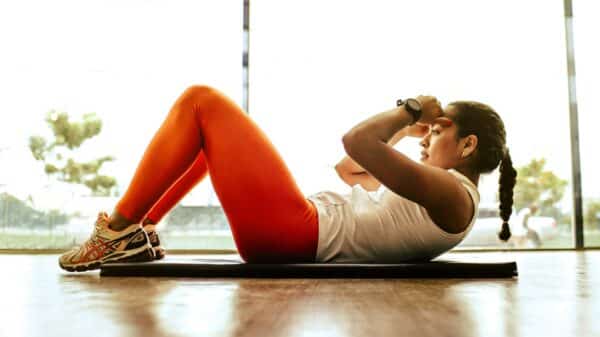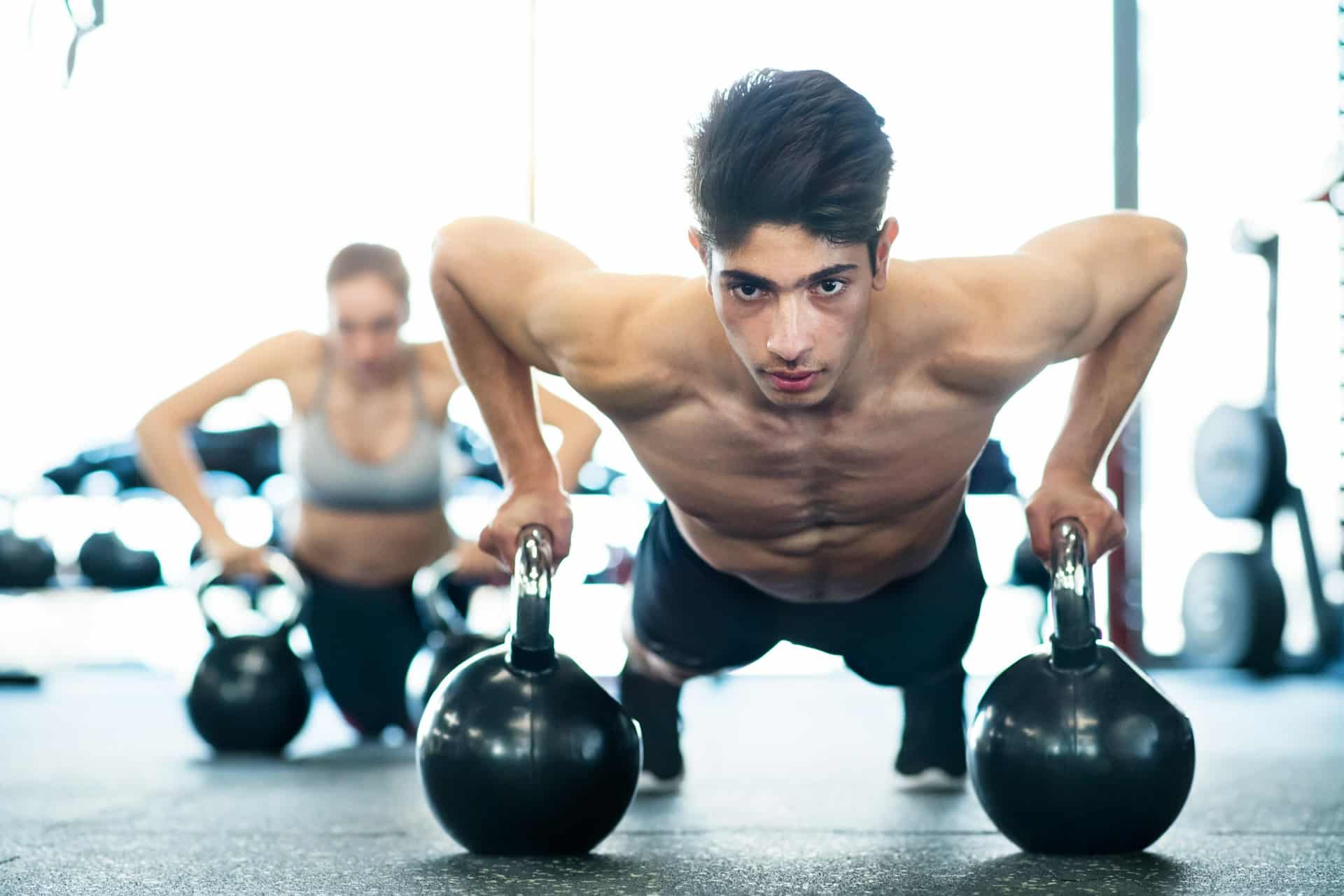Building a powerful chest isn’t solely about aesthetics; it represents strength and capability. For many fitness enthusiasts, achieving a robust chest is both a functional and visual goal. Curious about how to achieve that? Here’s a guide on the chest workouts to incorporate into your routine for impressive results.
To increase your chest size effectively, you’ll need to focus on several critical elements: exercise selection, repetitions, rest periods, and lifting speed. While grasping these principles may seem overwhelming, mastering them can lead you to remarkable chest development.
Understanding Chest Anatomy
The chest consists of three primary muscle groups, with the pectoralis major being the most prominent. Known as “the pecs,” these sizeable muscles, located on either side of your sternum, play a significant role in various upper body movements. When individuals discuss increasing their chest size, they usually refer to enhancing the pectoralis major.
This muscle group is vital for pushing actions involving both arms and shoulders. Whether you’re lifting heavy objects or bracing yourself during a sport, the pectoralis major powers your efforts.
The key movements these muscles facilitate include:
– Transverse flexion: Bringing your hands together in front of you with elbows out.
– Transverse adduction: Moving your upper arms toward your body with arms down.
– Extension: Lowering your upper arms back and down.
– Adduction: Moving your upper arms out to the sides.
Above the pectoralis major, the pectoralis minor supports shoulder movements alongside the serratus anterior. This muscle group is crucial for strength-based activities, such as pushing or pulling.
It’s essential to remember that while these muscles generate significant power, they also work with other smaller muscles in the shoulder region. Many gym-goers may suffer from shoulder discomfort over time, often due to repetitive strain from intense chest workouts. Strategies like proper warm-ups, lifting techniques, and balanced training can help you avoid injuries.
Optimize Chest Training with Nerve Innervations
One fascinating aspect of the pectoral muscles is their unique composition: they feature multiple nerve innervations that enable varied contractions. “Nerve innervations are integral to muscle function,” says Brian Richardson, an experienced strength coach. “They connect with muscle fibers and control contractions.”
Having several nerve connections allows you to target different areas of your chest through diverse exercises. To maximize this advantage, select workouts that challenge your pecs from multiple angles.
Boosting Chest Size
Choosing the right chest exercises is vital for reaching your fitness targets. If your aim is to fill out your T-shirt with muscular definition, training like a bodybuilder is key. Bodybuilders excel at muscle hypertrophy—the growth and strengthening of muscle fibers—making their methods effective.
Unlike athletes who focus on functional strength, bodybuilders prioritize size and symmetry, which aligns with the objectives of most gym-goers.
To stimulate chest growth effectively, concentrate on isolating the pectoral muscles. As Richardson points out, “Emphasize major pec activation over core engagement.” Classic exercises such as the flat bench press, dumbbell bench press, and incline bench press provide stable platforms for heavy lifting and focused muscle work.
Research from *Physician and Sports Medicine* indicates that static exercises like bench presses are excellent for activating chest muscles. Although workouts on unstable surfaces engage core muscles more, they often compromise chest activation.
Using electromyography (EMG) studies has shown that while the flat bench press is beneficial, variations like incline and decline presses activate more muscle tissue in the chest.
Embrace Your Path to Fitness
As you aim to build a bigger chest, remember that your journey is just as significant as the results. Progress takes time, and finding the right workout balance leads to optimal outcomes. Monitor your development and tune in to your body to prevent overtraining.
Incorporating these strategies and exercises into your routine allows you to build a strong, confident chest that enhances both looks and overall strength. Whether lifting weights at the gym or carrying groceries, well-developed pecs provide a noticeable advantage. Stay diligent, and watch as your chest transforms through this fitness journey.
Achieving a Wider Chest
Many fitness enthusiasts desire the classic V-taper look—a narrow waist complemented by a broad chest and defined shoulders. It’s a timeless visual appeal that makes a statement. To cultivate a wider chest, utilize a variety of exercises while ensuring a full range of motion.
Experiment with different grip options and hand placements to maximize muscle development. Don’t forget about back training; a robust back improves overall appearance and posture. Poor posture, commonly seen as a rounded back (kyphosis), detracts from that desired chest width. Incorporating row variations and deadlifts enhances posture, making the chest appear broader while minimizing back discomfort.
If you admire the sculpted chest of icons like Arnold Schwarzenegger and wonder how to tone your chest, remember that a toned muscle is essentially a larger one. Body fat often conceals the muscle definition that makes your hard work visible. Implement effective workout strategies to stimulate chest growth and gradually reduce body fat to showcase your well-earned results.
How Many Chest Exercises Should You Include?
When planning your chest workout, a common question arises: “How much is sufficient?” Research in the *Journal of Sports Sciences* indicates that performing ten or more sets per week for a specific muscle group is optimal for growth. Some individuals may even benefit from 20 to 25 sets, depending on their recovery capabilities. As a general guideline, aim for at least ten sets weekly.
Prominent bodybuilder and chiropractor Dr. Chris Zaino recommends completing 12 to 16 sets each workout, divided across three to five different exercises. This strategy ensures comprehensive engagement of your chest muscles while allowing adequate recovery.
Chest Workouts for Women
For women, effective chest exercises often mirror those for men, but there are specific considerations. Women generally possess less upper body muscle mass, which may alter the mechanics of certain movements. Equip yourself with knowledge of proper techniques, and work towards your personal best—regardless of gender, a strong chest enhances capabilities and boosts confidence in all aspects of life.When it comes to chest workouts, paying attention to the head and neck can make a significant difference during pressing exercises. Activities like the Swiss ball dumbbell bench press can lead to quick neck fatigue. A simple yet effective technique is to press your tongue against the roof of your mouth. This little adjustment helps activate more muscle fibers in your neck, promoting better stability and comfort.
Ensuring Safe Chest Workouts
Intense chest routines can put your shoulders at risk if caution isn’t exercised. A solid warm-up is essential for preventing injuries. Before diving into your routine, dedicate time to soft tissue work using a foam roller or lacrosse ball. Focus specifically on your pectoral muscles, rolling slowly and pausing on sore spots for about 30 seconds.
After that, incorporate resistance band exercises by making X and T shapes with your arms. It’s straightforward, but a proper warm-up can have a substantial impact. Don’t skip light cardio and warm-up sets with minimal weight. These may not count toward your workout, but they prepare your body for effective lifting.
When using a barbell, avoid allowing it to rest on your chest. This habit often comes from seasoned bodybuilders with larger chests. Aim to stop the bar a couple of inches above your chest for optimal safety and technique.
Essential Chest Exercises
To maximize both strength and size in your chest workouts, consider incorporating a variety of exercises. Here are key movements to include:
Incline Barbell Press
Begin lying on the bench with your feet firmly on the ground. Grip the bar with an overhand hold, hands a bit wider than shoulder-width. Lower the bar until it’s nearly touching your collarbone. Focus on contracting your pectorals as you press back up, driving through your thumbs and index fingers. This engages your chest for effective development.
Flat Barbell Bench Press
Similar to the incline version, lie on a flat bench and grip the bar. As you lower it, ensure your elbows form a roughly 90-degree angle at the bottom. When pressing back up, concentrate on squeezing your chest muscles for maximum effect.
Slight Incline Dumbbell Press
Adjust the bench to a slight incline of about 30 degrees. Hold a dumbbell in each hand, positioned just outside your shoulders. Press the weights upward while keeping them apart to maintain tension on your pecs. The weights shouldn’t touch, allowing for continuous muscle engagement.
Cable Fly to Cable Chest Press
Set pulleys above shoulder height and grab a D-handle in each hand. With slightly bent elbows, pull the handles together while contracting your pecs. Pause briefly at peak contraction before returning to the starting point. Once fatigued from the flyes, transition to a standing chest press to keep the burn going.
T Push-Up
This push-up variation adds a fun twist. After each push-up, lift one hand off the ground and bring it to your chest, then switch to the other side. This engages your core and enhances overall upper-body strength.
Swiss Ball Dumbbell Press
Sit on a stability ball with dumbbells in hand and your feet flat. Walk your feet forward until your back is on the ball, making your body parallel to the ground. Press the dumbbells upward and lower them until your elbows form a 90-degree angle. This targets your chest while also challenging your balance.
Hammer Strength Incline Press
Adjust the machine to fit your frame. Sit against the pad and ensure the handles are at shoulder height. Press them away until your arms nearly extend fully. Control the descent without letting the weights touch the ground, keeping your muscles under tension.
Three-Way Pulley Fly
Set the pulleys to their highest position and assume a staggered stance. Pull the cables together in an arc, maintaining slight bends in your elbows. After 10 reps, adjust the pulleys to shoulder height for another set, and finally to the lowest position for a last round. Changing the angle ensures full muscle engagement.
Dips
Using parallel bars, lock your arms to support your weight. Lean slightly forward, lower yourself until you feel a stretch in your chest, but avoid going too low to protect your joints. Press back up for added thickness in your chest.
Spider-Man Crawl
Begin in a push-up position, then lower just above the ground. Push with one arm while reaching forward with the opposite arm, bringing that knee close to the corresponding elbow. Maintain stability in your hips as you control the movement. This dynamic exercise adds a fun aspect and is highly effective.
Incline Swiss Ball Dumbbell Press
Using the same setup as before, press the weights upward while ensuring proper torso positioning. Focus on the movement of your pecs throughout the range.
Decline Bench Press
Unlock the barbell and lower it toward your lower chest. Stay mindful of elbow positioning for safety, and monitor the bar path to keep it from drifting too far forward as you press back up.
Machine Press
This straightforward exercise can effectively strengthen your chest. Align the machine handles with your shoulders. Concentrate on squeezing your pecs at the top and lower the handles slowly back to the start.
One-Arm Pec Deck
On the pec-deck machine, adjust the seat height to shoulder level. Work one side at a time, keeping a slight bend in your elbow to ensure maximum muscle engagement.
Final Thoughts
Consistency is crucial for developing a well-defined chest. Regular training, proper nutrition, and adequate recovery will lead to incredible results. Keep in mind, fitness is a long-term journey. By staying dedicated to these workouts, you’re laying the groundwork for ongoing strength and success. Stay motivated, and embrace the process!































